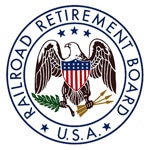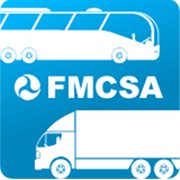According to an article published by The Hill, Republicans are planning a renewed attack on the political power held by unions via the passing of right-to-work and other unfavorable laws. This comes in the wake of the GOP victories across the country in November giving Republicans a majority in both the House and Senate and in some key state governments.
Read more from The Hill.
Author: amyr
In a press release, Southeastern Pennsylvania Transportation Authority (SEPTA) signed an Implementing Memorandum of Understanding (IMOU) with SMART TD Local 61, BLET and the Federal Railroad Administration (FRA) for the Confidential Close Call Reporting System (C3RS). Below is SEPTA’s press release:
PHILADELPHIA (December 12, 2016) – SEPTA, the Brotherhood of Locomotive Engineers and Trainmen (BLET), SMART United Transportation Union-Local 61 (SMART-UTU) and the Federal Railroad Administration (FRA) today signed an Implementing Memorandum of Understanding (IMOU) for the Confidential Close Call Reporting System (C3RS).
As a C3RS site, SEPTA’s railroad conductors and engineers will be able to anonymously report near misses and unsafe conditions without fear of repercussion. SEPTA joins Amtrak, New Jersey Transit, Metra (Chicago), MBTA/Keolis (Boston), Long Island Railroad, Metro North and Strasburg Railroad (Strasburg, Pa) as carriers with C3RS IMOUs.
“Building a strong safety culture is a key organizational goal for SEPTA. We are always exploring ways to expand and enhance our programs,” said SEPTA General Manager Jeffrey Knueppel. “As a C3RS site, we will be made aware of situations that we might not have been previously alerted to so that we can take action to prevent accidents and protect our employees and passengers.”
Under the C3RS system, SEPTA’s engineers and conductors will be able to submit a safety problem or close call online or through U.S. mail to the National Aeronautics and Space Administration (NASA). NASA, acting as an independent third party federal agency, gathers and analyzes all data for C3RS, removes employees’ names and contact information (these are required for the NASA portion of the investigation) and then returns the reports to a peer review team comprised of SEPTA managers, the unions and FRA for review and action.
“We are looking for conditions or close calls other than accidents or injuries that might not otherwise be reported to the FRA,” said SEPTA Assistant General Manager of System Safety Scott Sauer. “We are asking employees to report events that we might not otherwise know about, the warning signs and precursors that could lead to major safety risks and accidents.”
“C3RS, along with PTC [Positive Train Control] implementation, which is nearly complete on SEPTA territory, will greatly improve the safety of our system,” Knueppel said.
“Previously, employees may have been hesitant to report a close call, fearing disciplinary action for themselves or colleagues,” said Sauer. “When NASA returns the report to the peer review team, it is completely scrubbed of any employee information. We never know who submitted the information to NASA.”
For more information on C3RS, click here.
U.S. Senator Chuck Schumer (D-NY) is asking the Dept. of Homeland Security to “immediately step in to enforce a recommendation” made years ago to screen mass transit employees against federal terror watch lists. Read the complete article from abcnews.go.com.
Chairman Daniel R. Elliott III of the Surface Transportation Board (STB) visited the Canadian Transportation Agency (CTA) in Ottawa, Canada, and signed a Memorandum of Understanding (MOU) to facilitate information sharing between the agencies.
The CTA is the economic regulator of the freight railroads and other modes of transportation in Canada. Chairman Elliott signed the MOU with Dr. Scott Streiner, chairman and chief executive officer of the CTA.
The MOU memorializes the ongoing relationship that the two agencies have cultivated in recent years. It recognizes the importance of their engagement to promote ongoing information exchanges on developments in rail transportation, best practices in their respective regulatory approaches, and recent regulatory activities and current events. The agencies will exchange only information that is in the public domain in the United States and Canada to ensure that no confidentiality concerns are breached.
“The United States and Canada are linked in so many ways, not least of them by a vast rail network,” Chairman Elliott stated in Ottawa. “It is an honor today to be signing this Memorandum of Understanding between the STB and the CTA, marking our commitment to be a resource to each other in the economic regulation of freight railroads. This friendship will enable us both to engage in productive dialogue on better regulatory practices to our stakeholders and the citizens of our countries.”
Click here to view the electronic version of the MOU.
President-elect Trump wasted no time in slamming a union leader for speaking the truth. Chuck Jones, president of United Steelworkers Local 1999 at the Carrier plant in Indiana, stated that the actual number of jobs that will remain at the Indiana plant is near 800, not the nearly 1,200 jobs that Trump recently promised to save. Trump, seemingly upset over the fact that his false assertion was revealed, lashed out at Jones in a tweet. Read the complete story from the Daily Kos, here.
The Los Angeles County Metropolitan Transportation Authority (LACMTA) increased security after having received a bomb threat Monday, Dec. 5.
The threat warned of a possible attack at the Red Line subway’s Universal Station in Studio City, Calif.
LACMTA is working with the FBI and police to investigate this threat.
Read more from Progressive Railroading.

Tier I and Medicare Tax.–The railroad retirement tier I payroll tax rate on covered rail employers and employees for 2017 remains at 7.65 percent. The railroad retirement tier I tax rate is the same as the social security tax, and for withholding and reporting purposes is divided into 6.20 percent for retirement and 1.45 percent for Medicare hospital insurance. The maximum amount of an employee’s earnings subject to the 6.20 percent rate increases from $118,500 to $127,200 in 2017, with no maximum on earnings subject to the 1.45 percent Medicare rate.
An additional Medicare payroll tax of 0.9 percent applies to an individual’s income exceeding $200,000, or $250,000 for a married couple filing a joint tax return. While employers will begin withholding the additional Medicare tax as soon as an individual’s wages exceed the $200,000 threshold, the final amount owed or refunded will be calculated as part of the individual’s Federal income tax return.
Tier II Tax.–The railroad retirement tier II tax rates in 2017 will remain at 4.9 percent for employees and 13.1 percent for employers. The maximum amount of earnings subject to railroad retirement tier II taxes in 2017 will increase to $94,500 from $88,200. Since 2004, tier II tax rates are based on an average account benefits ratio reflecting railroad retirement fund levels. Depending on this ratio, the tier II tax rate for employees can be between 0 percent and 4.9 percent, while the tier II rate for employers can range between 8.2 percent and 22.1 percent.
Unemployment Insurance Contributions.–Employers, but not employees, pay railroad unemployment insurance contributions, which are experience-rated by employer. The Railroad Unemployment Insurance Act also provides for a surcharge in the event the Railroad Unemployment Insurance Account balance falls below an indexed threshold amount. The accrual balance of the Railroad Unemployment Insurance Account was $93.8 million on June 30, 2016. Since the balance is less than the indexed threshold of $152.9 million, a 1.5 percent surcharge will be added to the basic contribution rates for 2017, but will not increase the maximum 12 percent rate. There was also a surcharge of 1.5 percent in 2015 and 2016, with no surcharge in 2013 and 2014.
As a result, the unemployment insurance contribution rates (including the 1.5 percent surcharge) on railroad employers in 2017 will range from the minimum rate of 2.15 percent to the maximum of 12 percent on monthly compensation up to $1,545, up from $1,455 in 2016.
In 2017, the minimum rate of 2.15 percent will apply to 78 percent of covered employers, with 8 percent paying the maximum rate of 12 percent. New employers will pay an unemployment insurance contribution rate of 1.62 percent, which represents the average rate paid by all employers in the period 2013-2015.

“An overwhelming majority of the nation’s freight travels by truck, and millions of passengers reach their destinations by bus, so creating a central, comprehensive, and searchable database of commercial motor vehicle drivers who violate federal drug and alcohol testing requirements has been a departmental priority,” said U.S. Transportation Secretary Anthony Foxx. “This system will be a new technological tool that will make our roads safer.”
Once the clearinghouse is established, motor carrier employers will be required to query the system for information concerning current or prospective employees who have unresolved violations of the federal drug and alcohol testing regulations that prohibit them from operating a commercial motor vehicle (CMV). It also requires employers and medical review officers to report drug and alcohol testing program violations.
The drug and alcohol clearinghouse final rule annual net benefits are an estimated $42 million, with crash reductions resulting from annual and pre-employment queries by FMCSA-regulated motor carriers.
“This is a major safety win for the general public and the entire commercial motor vehicle industry,” said FMCSA Administrator Scott Darling. “The clearinghouse will allow carriers across the country to identify current and prospective drivers who have tested positive for drugs or alcohol, and employ those who drive drug- and alcohol-free. Drivers who test positive for drugs or alcohol will no longer be able to conceal those test results from employers and continue to drive while posing a safety risk to the driving public.”
The final rule requires motor carriers, medical review officers, third-party administrators, and substance abuse professionals to report information about drivers who:
- Test positive for drugs or alcohol;
- Refuse drug and alcohol testing; and
- Undergo the return-to-duty drug and alcohol rehabilitation process.
Additionally, motor carriers will be required to annually search the clearinghouse for current employees, and during the pre-employment process for prospective employees, to determine whether a driver violated drug or alcohol testing requirements with a different employer that would prohibit them from operating a CMV.
Federal safety regulations require employers to conduct pre-employment drug testing and random drug and alcohol testing. Motor carriers are prohibited from allowing employees to perform safety-sensitive functions, which include operating a CMV, if the employee tests positive on a DOT drug or alcohol test.
In accordance with the Privacy Act of 1974 (5 U.S.C. § 552a), a driver must grant consent before an employer can request access to that driver’s clearinghouse record and before FMCSA can release the driver’s clearinghouse record to an employer. After registering with the clearinghouse a driver can review his or her information at no cost.
Congress directed FMCSA to establish a national drug and alcohol clearinghouse as mandated by the Moving Ahead for Progress in the 21st Century Act (MAP-21).
The national drug and alcohol clearinghouse Final Rule goes into effect in January 2020, three years after its effective date.
To view the drug and alcohol clearinghouse Final Rule, click this link.
To learn more about the drug and alcohol clearinghouse, click on this link.

Since that adjustment is 0.3 percent in 2017, about 70 percent of Medicare beneficiaries will see only a slight increase in their Part B premiums. The higher premium amount will apply to new enrollees in the program, and certain beneficiaries will continue to pay higher premiums based on their modified adjusted gross income.
The monthly premiums that include income-related adjustments for 2017 will be $187.50; $267.90; $348.30 or $428.60, depending on the extent to which an individual beneficiary’s modified adjusted gross income exceeds $85,000 (or $170,000 for a married couple). The highest rate applies to beneficiaries whose incomes exceed $214,000 (or $428,000 for a married couple). The Centers for Medicare & Medicaid Services estimates that less than 5 percent of Medicare beneficiaries pay the larger income-adjusted premiums.
Beneficiaries in Medicare Part D prescription drug coverage plans pay premiums that vary from plan to plan. Beginning in 2011, the Affordable Care Act required Part D beneficiaries whose modified adjusted gross income exceeds the same income thresholds that apply to Part B premiums to also pay a monthly adjustment amount. In 2017, the adjustment amount ranges from $13.30 to $76.20.
The Railroad Retirement Board (RRB) withholds Part B premiums from benefit payments it processes. The agency can also withhold Part C and D premiums from benefit payments if an individual submits a request to his or her Part C or D insurance plan.
The following tables show the income-related Part B premium adjustments for 2017. The Social Security Administration (SSA) is responsible for all income-related monthly adjustment amount determinations. To make the determinations, SSA uses the most recent tax return information available from the Internal Revenue Service. For 2017, that will usually be the beneficiary’s 2015 tax return information. If that information is not available, SSA will use information from the 2014 tax return.
Those railroad retirement and social security Medicare beneficiaries affected by the 2017 Part B and D income-related premiums will receive a notice from SSA by December 2016. The notice will include an explanation of the circumstances where a beneficiary may request a new determination. Persons who have questions or would like to request a new determination should contact SSA after receiving their notice.
Additional information about Medicare coverage, including specific benefits and deductibles, can be found at www.medicare.gov
